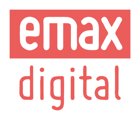Amazon event days, such as Prime Day or holiday seasons, are pivotal moments for maximizing sales through strategic advertising. Planning your ad spend effectively can significantly enhance visibility and drive conversions. Here’s a comprehensive guide to help you navigate and optimize your ad spend for Amazon event days:
1. Getting Started
a. Utilize Historical Data
b. Refine Targeting Strategies
c. Assess Special Campaigns and Promotions
2. Plan your Budget
4. Real-Time Monitoring
5. Evaluate Performance and Learn for Future Events
1. Getting Started
a. Utilize Historical Data
Product Performance and ASIN Focus: Analyze year-over-year (YoY) performance data to understand sales trends and identify top-performing ASINs leading up to event days.
Start Analyzing your historical data:
➡️ Product Performance VC / SC
For faster current vs. previous year comparisons, we suggest using our Product Performance, where you get to create your own table overviews with chosen KPIs.
Compare Advertising Performance
- Use historical data to compare ad spend and sales metrics YoY, gauging the effectiveness of past advertising strategies during event periods.
- Assess the Return on Ad Spend (ROAS) to optimize ad budgets based on historical performance for upcoming events.
Start Analyzing your advertising performance:
➡️ ASIN per Campaign performance
Start by comparing your TOP ASINs current performance with the previous year.
Additionally, make sure to check the campaigns your ASINs are running in and how they perform in each of them.
ASINs that are running bad in one or more campaigns, make sure to create single ASIN Campaigns, or to reallocate the ASIN in another campaign.
b. Refine Targeting Strategies
Keyword and Product Targeting Analysis
- Review past campaigns to analyze keyword performance and identify high-converting keywords relevant to event-specific trends.
- Incorporate event-specific keywords in campaigns to capitalize on seasonal search trends and maximize ad visibility.
Campaign-Level Analysis
- Evaluate past campaign performance at the targeting level (e.g., keywords, product targets) to refine targeting parameters for future campaigns.
- Identify successful targeting methods and strategies to replicate and enhance for upcoming event days.
c. Assess Special Campaigns and Promotions
- Review performance metrics from past special campaigns (e.g., promotions, discounts) conducted during event days to assess engagement and sales impact.
- Analyze targeting effectiveness and ASIN-level performance to optimize strategies for maximizing ROI during future events.
2. Plan your Budget
a. Determine Total Budget:
- Based on historical performance data and expected sales uplift, calculate the total ad spend required.
- Consider factors such as past event performance, current market trends, and available inventory.
b. Distribute Budget Across Campaigns:
- Allocate a larger portion of the budget to high-performing products and ASINs identified through YoY analysis.
- Set aside funds for special promotions and event-specific keywords to capture increased search traffic.
c. Dynamic Budget Adjustment:
- Prepare to adjust budgets in real-time based on performance metrics during the event.
- Increase spend on top-performing campaigns and reduce spend on underperforming ones to maximize ROI.
3. Real-Time Monitoring
- Continuously monitor campaign performance using our Rapid Retail Analytics Dashboard (Vendor only)
- Adjust bids, budgets, and targeting settings in real-time based on performance metrics to optimize ad spend and achieve maximum results.
As a Vendor you have the option to use our Rapid Retail Analytics board to evaluate Real-time sales and inventory data during peak seasons or event days.
Learn how to use our Rapid Retail Analytics dashboard:
➡️ Rapid Retail Analytics Dashboard - Walkthrough
➡️ How can I monitor hourly data?
In case you are not yet using Rapid Retail Analytics, feel free to get in touch with your Account Manager or supportlemax-digital.com for more information.
5. Evaluate Performance and Learn for Future Events
Post-Event Analysis
- Conduct a comprehensive analysis post-event to evaluate overall campaign effectiveness, including metrics such as sales lift, ROAS, and customer acquisition.
- Use insights gained to refine future ad spend strategies and campaign tactics, continuously optimizing based on historical learnings and market dynamics.
Budget Readjustment
- Allocate More to Successful Campaigns: Increase future budgets for campaigns and targeting strategies that delivered strong performance and high ROAS.
- Reallocate Funds from Underperforming Campaigns: Reduce or eliminate budget for campaigns that did not meet performance expectations, reallocating those funds to more effective initiatives.
- Turn Off or Reduce Budget for Special Event Campaigns: If special event campaigns did not perform well, consider turning them off or significantly lowering their budget for future events.
- Iterative Learning: Continuously optimize ad spend based on historical learnings, market dynamics, and evolving customer behavior, ensuring your budget is always aligned with the most effective strategies.
